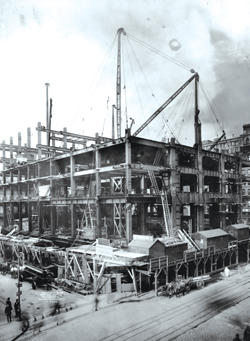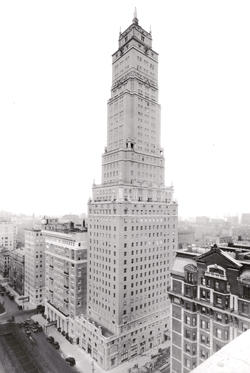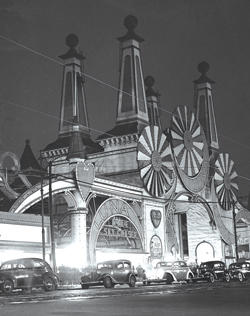1911: Woolworth snags financing for namesake tower

The Woolworth Building
Retail entrepreneur Frank Winfield Woolworth secured $13 million 107 years ago this month to build his 60-story office tower in Lower Manhattan, according to the New York Times. Assembling the land took Woolworth about eight months and cost about $4.5 million. The majority of financing came from foreign investors, and about $8 million was raised in Europe — mostly in France — as Woolworth’s attorney, who journeyed to the Continent to raise funds, told the Times. Construction on the Woolworth Building commenced a year later, and costs for the Cass Gilbert-designed structure ultimately came to $13.5 million. At the building’s opening in 1913, President Woodrow Wilson turned on the tower’s lights remotely from Washington, D.C. The “Cathedral of Commerce,” as it became known because of its Gothic structure and tenancy, was the tallest building in the world until 1930, when the Chrysler Building was completed. The Woolworth family owned the trophy property until 1998, when the Witkoff Group bought it for $155 million. Current owner Alchemy Properties converted the building’s upper floors into the Woolworth Tower Residences luxury apartments, including a $110 million penthouse.
1932: Explosion at the Ritz

Ritz Tower
A fire and subsequent explosions at the Ritz Tower 86 years ago this month killed seven firefighters, injured 30 others and catapulted about $100,000 worth of gems from the building’s ground-floor jewelry shop onto the streets. Inaugurated in 1926, the residential tower at 465 Park Avenue was a hybrid hotel-apartment building — a concept devised in the 1880s to sidestep residential building height rules and to acclimate wealthy residents to the concept of multifamily living. After a fire broke out in the Ritz’s basement, firefighters were dousing the blaze when pent-up fumes spontaneously combusted, triggering two explosions. Despite the severity of damage, most residents were “not much alarmed,” the Times reported. To the New York City Fire Department, however, the incident was the deadliest in more than a decade, and the FDNY continues to hold memorials for the men who died in the line of duty. The Ritz Tower was converted into a co-op in the 1950s.
1944: Coney Island’s fire-hot summer

Luna Park
Coney Island’s Luna Park burned down 74 years ago this month, according to the New York Times. It was the first of two fires that led to the official closure of the amusement park in 1946 and was caused by one of its original rides, the Dragon’s Gorge. The ride was built by architect Frederic Thompson and financier Elmer “Skip” Dundy, who met while they were designing rides and raising funds, respectively, for expositions, including the Columbian Exposition of 1893. For the New York World’s Fair of 1901, the pair created a popular ride called “A Trip to the Moon,” which featured an aircraft called Luna and an extraterrestrial encounter with actors dressed as aliens. After the fair closed, the men installed the ride in Steeplechase, the popular Coney Island theme park, in exchange for paying its owner 40 percent of their profits. After the success of their first season, Thompson and Dundy struck out on their own, buying a nearby sea lion park in West Brighton and raising $1.5 million to set up their own establishment. They opened Luna Park in May 1903. The 2009 rezoning of Coney Island led to the redevelopment of a new theme park named after the famed Luna Park.